|
A Message from Our President When you think about a non-profit organization that helps small to medium sized businesses grow their international presence what types of companies comes to mind? Do you think about...
And the list continues... These are the types of companies we help to grow, companies that enhance lives around the world. The WTCGP works with over 350 companies every year, companies who make a significant contribution to the communities and citizens of Southeastern PA, Southern New Jersey and the world. Since 2002, the WTCGP has served as a catalyst for regional economic growth and job creation, helping area companies generate over $1.6B in incremental export sales, supporting over 20,200 jobs. As one of over 318 World Trade Centers in 88 countries around the globe, the WTCGP accelerates global business growth by providing customized one-on-one trade counseling, market research, educational programs, trade mission support, business networking events, and powerful connections to customers and partners worldwide. As a non-profit organization, we rely on a combination of government funding, membership, sponsorships and donations from folks who believe in our mission. Help us so that more companies become part of our region's global success. Help us support peace and prosperity through trade. On this Giving Tuesday, we ask you to consider a donation to our organization. Thank you in advance for your support. Linda Mysliwy Conlin - President, World Trade Center of Greater Philadelphia
Going global with your mobile apps, SaaS, and cloud solutions requires translation and localization for multiple languages. Software developers and digital project managers may be the most tech-savvy people around, but if you aren't familiar with the localization process, it can look like a black box.
In this meetup, we’ll break open the black box and unpack the tools and workflows used by software localization experts. These include: · Computer Aided Translation (CAT) software. We’ll discuss how these tools capture and parse translatable text, increasing speed, accuracy, and efficiency. · Quality Assurance software. These use algorithms to flag potential errors in any language. · Emerging tools for agile workflows. These allow for ongoing changes to source code and continuous delivery of localized versions without disrupting workflows. You’ll come away with a better understanding of how the decisions made by digital project managers and software developers impact the translation process. A look inside the localization black box prepares your team for efficient, cost-effective software localization. Learn more. As an innovation-driven economy, the United States prides itself on developing and delivering innovative goods and
services domestically and globally through high-tech exports, creative branding, and in-demand services. Among those exports is our growing wine sector, led by Napa Valley but recently expanding into other parts of California, Oregon, Virginia, and other lesser known wine producing regions of the United States. Despite this expansion, the United States remains behind old world wine producers in Europe. Recently Chile and Australia are also outpacing the United States in terms of wine exports and have been leading the way in innovative production and marketing techniques. On this faculty-focused immersion experience, participants will visit a number of innovative businesses in the wine export sector and related industries in Chile to better understand how innovation in a highly-regulated sector can disrupt the traditional approaches taken by Old World producers in Europe and provide a comparative advantage for modern producers. Some of the key learning outcomes will include: • An understanding of how innovation is utilized to drive growth in emerging markets; • A comparative perspective of an innovative sector active in the home and target market; • A better sense of the supply chain for a commodity such as wine and how innovation can accelerate movement along that supply chain and; • Tools that can be used to leverage enhancements in innovation for U.S. exporters. For details, click here. Consulmex Filadelfia is pleased to present the new edition of the 'Consular Magazine', where you can find useful information on the work undertaken by the Mexican Consulate in Philadelphia. As you will see, this work is characterized by strong promotion and protection of the rights of the Mexican community in our jurisdiction (Pennsylvania, Delaware and southern New Jersey). Click here.
Via U.S. Customs and Border Protection Program is now available in some of the busiest Global Entry enrollment areas and will continue to expand through the remainder of 2017 and into 2018
WASHINGTON—U.S. Customs and Border Protection announced today the expansion of Global Entry Enrollment on Arrival to 11 additional international airports. Enrollment on Arrival enables conditionally-approved Global Entry applicants to complete their interview, the final step of the Global Entry enrollment process, while clearing CBP processing. The program is currently available at nine new locations including Dallas/Fort Worth International Airport (DFW), Detroit Metropolitan Airport (DTW), Minneapolis-Saint Paul International Airport (MSP), Phoenix Sky Harbor International Airport (PHX), Salt Lake City International Airport (SLC), San Diego International Airport (SAN), Norman Y. Mineta San Jose International Airport (SJC), Seattle-Tacoma International Airport (SEA), and Toronto Pearson International Airport (YYZ), and will launch later this week at Denver International Airport (DEN) and Philadelphia International Airport (PHL). “Global Entry continues to be one of CBP’s most successful and popular programs and we have made it a priority to improve the enrollment process for those looking to join the ranks of Trusted Traveler,” said Acting Commissioner Kevin McAleenan. “Last month, we launched a modernized, mobile-friendly application website making the initial step of the process more user friendly and now with these additional Enrollment on Arrival locations we have added greater flexibility for those looking to complete the enrollment process.” Since the program’s launch in July, more than 5,200 conditionally-approved Global Entry applicants have completed the final step of the enrollment process at an Enrollment on Arrival location. Enrollment on Arrival is also available at George Bush Intercontinental Airport (IAH), William P. Hobby Airport (HOU), Austin-Bergstrom International Airport (AUS), San Francisco International Airport (SFO) and Vancouver International Airport (YVR). Conditionally-approved applicants looking to utilize Enrollment on Arrival do not need to schedule an interview appointment ahead of time. Once a traveler is conditionally-approved, instead of scheduling an interview at a Global Entry Enrollment Center, the traveler can complete the enrollment interview during CBP primary inspection at a participating airport. Upon arrival, travelers will be directed to a primary booth designated specifically for Enrollment on Arrival. A CBP officer will conduct both the primary processing and Global Entry interview and collect the traveler’s biometrics to complete the enrollment. The traveler will then be cleared for entry into the United States and, if approved, will be a Global Entry member. Currently available at 54 U.S. airports and 15 Preclearance locations, Global Entry streamlines the international arrivals process at airports for trusted travelers. The more than 4.7 million Global Entry members bypass traditional CBP inspection lines and use an automated kiosk to complete their admission to the United States. As an added benefit, Global Entry members are also eligible to participate in the TSA Pre✓™ expedited screening program. U.S. citizens, U.S nationals and U.S. Lawful Permanent Residents may apply for Global Entry as well as passport holders from Argentina, Colombia, Germany, India, Mexico, the Netherlands, Panama, the Republic of Korea, Singapore, Switzerland, Taiwan and the United Kingdom. Canadian citizens and residents enrolled in NEXUS may also use the Global Entry kiosks. Interested travelers apply through the Trusted Traveler Programs website. The non-refundable application fee for a five-year Global Entry membership is $100 and applications must be submitted online. Once the applicant successfully passes a background check, a CBP officer will conduct an interview with the applicant at one of the more than 100 Global Entry Enrollment Centers located throughout the U.S., Canada, and Qatar or at an Enrollment on Arrival location and then make a final eligibility determination. While the goal of Global Entry is to speed travelers through the process, members may be selected for further examination when entering the United States. Any violation of the program’s terms and conditions will result in appropriate enforcement action and may result in the revocation of the traveler’s membership privileges. Visit CBP’s Global Entry website for more information on the Global Entry Program and the Enrollment on Arrival website for an updated list of available locations. U.S. Customs and Border Protection is the unified border agency within the Department of Homeland Security charged with the management, control and protection of our nation's borders at and between the official ports of entry. CBP is charged with keeping terrorists and terrorist weapons out of the country while enforcing hundreds of U.S. laws. Source Article Crowning achievement: Premier Dental's first female CEO reflects on her first year in charge11/13/2017
Via Philadelphia Business Journal By John George – Senior Reporter, Philadelphia Business Journal
Nov 8, 2017, 1:39pm Fifteen years after joining her family’s Plymouth Meeting-based company as a product manager, Julie Charlestein in 2016 took over as Premier Dental Products Co.’s CEO — a position previously held by her father. Founded in 1913 and led by the family for four generations, Premier sells dental products, from drills to cheek retractors, in 75 countries around the world. Charlestein sat down with the Business Journal recently to talk about her first year in the chief executive’s chair. Was your first year as CEO what you expected? Charlestein: It was not at all what I expected. I naively thought it wasn’t going to be much different. I was already basically running the company, but the minute that day came and I became CEO everything absolutely changed. There was a much heightened level of responsibility, accountability, urgency, excitement and fear. I was not anticipating that. How did you react? I just kept going. I just thought, ‘OK this is what the landscape is and this is what my role means,’ and I am very privileged and ecstatic to have it. What’s been the toughest decision you’ve have had to make? I don’t know that there has been one paramount, difficult decision. I’ve have been making changes, and sometimes it’s been at speeds people are not used to. I want to say to them, ‘I’ve been here for 15 years and I have been thinking about this forever.’ One of your major initiatives has been a rebranding of the company; can you explain why you’ve embarked on that? We’ve been in business for more than 100 years. In order to stay successful and relevant in any business in any industry you need to constantly be revolutionizing and re-inventing yourself. Another part of it has been looking to have a closer relationship with our end users. We don’t sell directly to dentists. We sell to our distributor partners who sell to dentists. We want to garner a closer relationship and greater loyalty with the end user.… My grandfather always said, ‘Remember who you are.’ We’ve always known who we are, but we were never able to succinctly say, in a quick statement, who we are. With our rebranding we created that. We are “Premier...inspired solutions for daily dentistry.’ That tagline clearly explains who we are. Along with that, there have been a lot — operational and system changes, bringing in new people, marketing automation, CRM [customer relationship management] changes — that we’ve done to build the brand and build more recognition not just in the industry, but with dentists worldwide. How has your relationship with dentists changed? We are seeing a lot more connectivity with them. They are looking at the videos we are positing in greater numbers. We are being interviewed a lot in industry journals and we are seeing people react to that. We are doing podcasts now on other people’s platforms and we are getting huge responses. You are the fourth-generation of your family to lead the company, but the first female CEO. Has that created any issues? To me it has not been challenging on the business front. More of a challenge is being in the family, as opposed to being a women. That’s why I am glad before I came to Premier I worked outside of the company and outside of the industry [in lobbying, polling and telecommunications]. It is very important to be validated by people other than your family.… I want to make sure I am not being judged simply for being a family member, but instead for the work I do and the value I bring. How has the industry changed during your time at Premier? The industry has consolidated a great deal among the manufacturers. All of our main competitors are multibillion-dollar public companies, for the most part. On the distribution side, the distributors are garnering more and more power and control. There has been a growth in [dental service organizations] and corporate dentistry. There are also technological advancements, nothing that has revolutionized the industry in any great way, but more incremental change. How do you compete with the larger publicly traded manufacturers? In meetings I say, ‘Don’t forget for every dollar we have, they have $500,000.’ But the size we are and being privately held gives us many advantages. We are able to take a longer-term view and we are able to spend and utilize our money the way we believe is the most correct. Also important is the brand, It is well known and has a wonderful reputation in the industry. Dentists do ask for our products. We are also always bringing on new products. That will always drive the relevance. As long as we are bringing new, needed technology to the marketplace, and our name is out there, we are driving the relevance. We are able to compete with these large companies because we know what we are doing. We’ve been in this business for a very long time. We have outstanding relationships and we keep strengthening those and growing others. What’s on your drawing board for year two? Right now it’s strengthening the branding and marketing processes. We have the look and feel. We have the messaging. Right now we are looking at what processes we have to elevate that and ensure it is being translated into our work in the marketplace in terms of market share and loyalty. We recently hired a [chief marketing officer], a position we never had before, a gentleman named Chris Helle, to help us do this. So are you having fun? I love it. I totally, totally love it.… It’s unusual for businesses to get to a fourth generation, especially a successful business. I am so lucky for the stewardship and vision and leadership of my father and his father. Was there ever any doubt in the family you would one day be taking over as CEO? There was never pressure on me. There were never expectations. I always knew who I wanted to be, but not what I wanted to be. I knew I wanted to be fiercely independent and a leader. I didn’t know what that would look like.… I was the only [sibling] who was ever in the business, so it was a natural progression. I had been here 15 years full time. I started as a product manager and worked my way up. I worked through all areas of the business. About two years ago or so, my father started talking about not wanting to be in the CEO role much longer and from there the transition planning began. Via Philadelphia Business Journal The bids are in and the six-week sprint that led up to Amazon HQ2 proposals being submitted by communities from across our region has shined a welcome spotlight on Greater Philadelphia as a business location of choice.
The proposals coming out of Greater Philadelphia last month focused on our region’s enviable assets and advantages — a strong, diverse workforce; an easily accessible international airport; an extensive regional transit network; world-class higher education institutions; a central East Coast location; our livability and affordability. It would be hard to deny that our region has all the fundamentals and then some. Most exciting was how a wide array of local and regional leaders came together and promoted our strengths. At the same time, we — like all major U.S. metros — face complex challenges. Too many people in Greater Philadelphia face impediments to opportunity. Poverty remains high, neighborhoods are struggling to capitalize on regional growth, and many young people do not have the skills needed to move into family-sustaining careers. While there is work to do, the good news is that there’s progress. Much ink has been spilled about our region’s recent renaissance — from the increase in our educated millennial population to the game-changing cellular therapy treatments emerging from our region’s medical research institutions to placement on a new “top places for” list seemingly every week. But the surge of energy, interest, and investment in many of our communities hasn’t happened by accident. It’s driven in no small part by increased collaboration among our regions’ nonprofits, institutions, and business leaders. This represents the other kind of infrastructure beyond transportation networks and utilities that companies like Amazon need in order to thrive — civic infrastructure. Visible examples of this coming together have come in the form of high-profile events and initiatives requiring collaborative leadership to pull off — whether the Pope’s visit, Democratic National Convention, NFL Draft, the Urban Land Institute’s global conference, or our designation as the first World Heritage City in the nation. Even greater proof of our strengthening civic infrastructure has been the growing number of sustained collaborations focused on moving the needle on growth and opportunity in Greater Philadelphia over the long run. The Economy League has helped power many of these civic partnership efforts with other high-capacity nonprofits and institutions. When the Urban Land Institute Philadelphia and the Economy League came together several years ago to drive the creation of a regional infrastructure agenda for Greater Philadelphia, Pennsylvania provided little in the way of dedicated transportation funding. Thanks to the tireless efforts of numerous nonprofit and private sector stakeholders who advocated for the need for dedicated funding, the legislature passed Act 89 in 2013, shoring up our roads, bridges, and transit systems. Last year, the World Trade Center of Greater Philadelphia and the Economy League released the Greater Philadelphia Export Plan – an ambitious effort to spur job growth by helping more area businesses sell their goods and services abroad. The World Trade Center recently received a $1 million federal grant to support implementation of this plan with a broad range of partners by boosting exports among small and medium sized businesses and in priority clusters. Other examples abound — the Pre-K for PA coalition that is expanding access to high-quality early learning across the state, the ImpactPHL collaborative accelerating awareness and growth of businesses addressing social needs in our region, and model talent initiatives like Campus Philly and Graduate! Philadelphia. What we need now is for regional leaders to leverage the energy and creativity generated by the HQ2 bids to accelerate regional growth and tackle our biggest challenges. HQ2 would be a major boon for Greater Philadelphia — but whatever happens, we must continue to work together to push our region forward. When it comes to a wealth of civic organizations building a better region, Philly also delivers. Read the original article here. Josh Sevin ([email protected]) is acting executive director at the Economy League of Greater Philadelphia. Laura Slutsky ([email protected]) is executive director of Urban Land Institute Philadelphia. Linda Conlin ([email protected]) is president of the World Trade Council of Greater Philadelphia. Camden’s ‘Ben Franklin’ — Holtec CEO’s big plans for Camden & the global nuclear industry11/13/2017
Via Philadelphia Business Journal By Michelle Caffrey – Reporter, Philadelphia Business Journal Nov 9, 2017, 11:43am EST Updated Nov 9, 2017, 11:50am Kris Singh had forgotten. The CEO of Holtec International, whose new manufacturing plant has been heralded as a potential game changer for the Camden, used to know the streets of the city well back in the early ‘70s. At the time, Singh, armed with a Ph.D from the University of Pennsylvania and drive to master the alchemy of turning research into action, worked for the Joseph Oat Corp. and was tasked with helping find the small industrial fabrication company a new home base. Remembering that the site of the New York Shipbuilding Corp., once a dominate force building U.S. Navy destroyers along the Delaware River, had fallen into bankruptcy and shuttered four years prior in 1968, he made a suggestion. “I said, ‘The shipyard closed, maybe you should get a small shop there,’” Singh said. Forty-two years later, he chose Camden again, when economic development tax credits made possible the construction of a massive move than $300 million manufacturing facility and executive building. The Krishna P. Singh Technology Campus is now up and running on the riverfront, a hulking campus of more than 1.5 million square feet, yards from the still-operating Oat company. It’s been a long time, however, and Singh realized the city was now unfamiliar to him. “I’d forgotten all the roads and streets around here,” Singh said in a July interview. He’s learning the city all over again as he works toward a plan that he believes could transform both Camden and the nuclear energy industry — both of which could use some help. “It’s full circle for me,” he said. Meet Kris Singh Holtec’s nuclear arm has had a base of operations in Marlton, N.J., since Singh started the company in 1986, and grew to become a major player in the nuclear industry worldwide, but Singh himself has never been in the region’s public eye. While his $20 million gift to Penn to create a nanotechnology center in 2007 made headlines as the largest single gift in the history of the School of Engineering and Applied Science, he first gained local notoriety in 2012 when he joined South Jersey business leader and Democratic powerbroker George Norcross in purchasing part ownership of Interstate General Media, then-parent company of the Philadelphia Inquirer and Philadelphia Daily News. Norcross’ holding company bought out Singh’s shares a year later, and Norcross sold his entire stake in 2014. “Kris has been somebody who has been largely unknown in the region, and in my opinion largely still is,” Norcross said in an interview with the Philadelphia Business Journal. “He is not someone who seeks out attention. … That’s not what he does.” Making a home Despite his aversion to the spotlight, in 2014 Singh and his company became a fixture in regional news stories about Camden when he announced Holtec planned to build a massive manufacturing operation in the struggling city. The only way the decision could be financially viable, Singh said, was to take advantage of $260 million in tax credits through the New Jersey Economic Development Authority’s Grow NJ program, which allocates tax credits to companies that decide to locate and add new jobs in impoverished cities including Camden. Other companies like Subaru of America and American Water have also taken advantage of the credits, which are determined based on projected job growth and only awarded after milestones are met. All have faced skepticism, with opponents arguing the companies are mostly relocating jobs from the suburbs into Camden and the ones that could go to Camden residents weren’t significant enough to warrant such large tax breaks. Holtec took additional heat given Norcross’ political power in the state and his seat on Holtec’s board of directors, which is uncompensated. From Norcross’ perspective, critics of the incentives don’t realize how the process really works, that the incentives are not a grant and that it will take nearly 20 years for Holtec to receive all of the benefits, if it meets projected job levels. Singh also took on significant risk, he argues, by putting up the nearly $400 million in capital required. “He was the original pioneer of stepping up and decided to do probably the single largest project in Camden,” Norcross said. “It was Holtec that really launched the renaissance, in my opinion.” In an interview with the Business Journal in October, Singh said if all goes according to plan, Holtec will eventually receive about 35 cents to 45 cents on the dollar for this investment. “Without that, it would’ve been impossible to make those numbers work,” he said. His competitors are based in countries where labor is cheap, so to be competitive he has to foot the bill for millions of dollars worth of high-end equipment and grow a skilled labor base. While 200 engineers and 200 fabricators are working on site now, he expects to increase that number from hundreds to thousands and one day, he hopes, to employ as many as 5,000. He’s talked about possibly turning the surrounding Fairview neighborhood, once home to shipyard yard employees, into a company town once again by developing adjacent properties. “It’s a little bit premature,” he cautioned. “We have to first build up the workforce here, stabilize the workforce, get them trained and then look at the next steps. In my long-term plan, that’s in the cards. Of course it will depend on how successful we are in our business ventures. But that is the goal.” The power to change power Those business ventures are vested in an industry that faces undeniable challenges. A combination of widespread fear of nuclear reactors fueled by the Fukushima nuclear disaster in 2011 and the fracking boom that produced seemingly endless amounts of cheap natural gas was a one-two punch that labeled the nuclear industry as an expensive and dangerous energy source. Three nuclear power plants in Florida, Wisconsin and California shut down operations in 2013, the first year any nuclear reactor was retired since 1998, according to the U.S. Energy Information Administration (EIA). Plants in Vermont and Nebraska closed in 2014 and 2016, respectively. Six more are expected to be retired within the decade, including Pennsylvania’s Three Mile Island and New Jersey’s Oyster Creek plants. Attempts to build new reactors in the southeastern United States have faltered. The construction of two new reactors in South Carolina was abandoned amid cost overruns and a plant being built in Georgia has also been met with cost criticism. Nuclear energy still supplies about 20 percent of the country’s energy generation, but the EIA projects that number will drop to 11 percent by 2050 as nuclear plants are retired and natural gas and renewable energy sources grow in market share. “The industry trajectory is not very good,” Singh readily admits. “A lot of people have exited the industry because they think that it has no future, and they are right in the sense that the way it is going, it is in a very tough spot.” That, in essence, is Holtec’s big play — to change the way it is going. Enter the small modular reactor, or SMR. SMR technology scales nuclear power generation down from the traditional massive reactors to portable, self-contained units that can be factory assembled. SMRs have been heralded as much cheaper and far safer — a potentially game-changing combination for the nuclear energy industry, although the commercialization and approval process to make SMRs a reality is still in the works. Holtec isn’t the only player in the SMR game, but after it lost out on a U.S. Department of Energy funding award to develop SMR designs, it’s the only company in the world that’s developing a model without any government funding. Singh said its model, SMR-160, is designed to be everything people worry nuclear power isn’t — safe, secured from potential attacks, affordable and easy to get up and running and operate. “There is a market for nuclear, but it cannot be a market that will work if the reactors are expensive and do not guarantee, not just assure but guarantee, there will be no accidents that will affect local populations,” Singh said. “So if we can make that work, then, yes, we will create the industry all over again. And that’s what we’re doing.” Aside from self-contained entities like military bases, that market also isn’t domestic. Holtec’s focused on deploying the SMRs worldwide. The company already has a deep global presence, with its equipment in use in more than 20 countries across six continents. Along with local politicians including New Jersey Gov. Chris Christie, both Ukraine’s Ambassador Valeriy Chaly and India’s consul general in New York Sandeep Chakravorty spoke at Holtec’s September ribbon-cutting ceremony in Camden. Once SMRs are ready to go — Singh expects the licensing process to last the next three years, followed by manufacturing, with the earliest deployment expected in 2023 — he said they have the potential to bring reliable, clean energy to countries that traditionally haven’t had the infrastructure and talent pools to support power stations since SMRs require far less manpower and, unlike traditional nuclear plants, do not have to be located near a large body of water. He compares the capability of SMRs to the revolutionary impact cell phones had in developing nations. In many poorer countries, people living in remote areas went from no connectivity, as phone line infrastructure didn’t reach them, to having access to the world of information available on affordable cell phones. The nature of the SMRs also means energy could be supplied locally, cutting out waste from energy lost during transmission and preventing distant outages from affecting large numbers of people. “It’s like going back to the agrarian economy, you grow your wheat and you consume it,” Singh said. SMRs have had their critics, with some academics dismissing the hype over their potential to have an impact on the industry as overblown and inaccurate, too little too late in a global economy that’s already shifted toward renewables and is increasingly reliant on natural gas. Unsurprisingly, Singh doesn’t entertain those arguments. “It’s all this nonsense. This goes on all the time. If you pay attention to those things, you don’t really get any of the work done,” he said. If the SMR does not live up to its potential, however, Singh’s business still has a solid outlook. Beyond its nuclear arm, Holtec’s large-scale manufacturing operations fabricates heavy equipment for industries ranging from military to petrochemical and a host in-between. Its Camden-based nuclear division is particularly focused on building dry cask storage systems that are needed to contain spent nuclear fuel — useful when shutting down nuclear plants. Many of the products and processes Holtec creates stem from Singh’s own patents. He has 78. Camden’s ‘little Ben Franklin’
Singh’s bullish take on transformation, whether he’s talking about the city of Camden or the nuclear industry, makes sense when you speak to people who know him, like Vijay Kumar, the Nemirovsky Family Dean of Penn Engineering at the University of Pennsylvania. “He came from extraordinarily humble beginnings. I think he told me once that he lived in a house with no electricity and he had to walk several miles to school and studied at night by a fire or candle,” Kumar said. “And now, I believe, he has the solution for clean energy worldwide.” Singh earned a bachelor’s degree in mechanical engineering from Ranchi University in India in 1967 before coming to the United States and earning both a master’s and doctorate in mechanical engineering at Penn. Kumar first met Singh more than 25 years ago, when Kumar was a young faculty member who had just arrived on Penn’s campus and Singh was the chair of the advisory committee for the engineering department. “At the time, I never saw where all of this is going, but I could immediately see this question of impact. If he was asked a simple question, he’d say like ‘OK, great, you’re doing this, but where is it going to take you next?’ As a young academic at that time, there is no next, this is my life, this is my career.” Singh gave the academic life a try. Early in his career, he took a job at Cornell University. Six months later he realized he didn’t want to research and teach, knowing the impact of that work would take decades to come to fruition. He wanted to work and see the results of that work in action, now. “I always wanted to do applied research, not trying to prove that zero is actually zero but really create things can be used,” he said. After building up experience in practical engineering in the field, he started Holtec, short for Holistic Technologies, a purposefully vague name he said was along the lines of “solution provider” since Singh didn’t quite know what they’d be doing beyond immediate business plans to get into nuclear fuel storage. He just knew he wanted to steer his own ship. “You want to have your own company because it’s the vehicle. What you want to do, you need to find a way to do it, and having your own company allows you to build it yourself,” he said. “You can put your money on the line, like we have done for the SMR.” Singh would not have made a good academic in that sense, Kumar said, as most academics tend to be risk-averse. “He understands you have to think outside of the box and be entrepreneurial,” he said. “He’s one of our most successful, I would say the most successful alumni, in terms of what he has done for the school and the Philadelphia area, in Camden.” Singh’s $20 million gift to establish the Krishna P. Singh Nanotechnology Center is fueling research that Kumar said could have significant impacts in numerous fields from creating nanoscale robotic devices that can perform procedures inside the human body to developing novel materials for roof shingles that project solar radiation by day and emit heat inside buildings at night. “He has a warm personality and is a man of the highest integrity, but above all, I think he cares about the society, the world,” Kumar said. “You see all the wonderful things he’s done. He’s a deeply compassionate man, so that is something that strikes you ... but behind that ease and warmth is just a man with a lot of discipline and a lot of strategic thinking that he brings to bear.” Kumar’s description is not unlike a figure Singh summoned himself when asked how he views his role in Greater Philadelphia. “I kind of look at myself as a little Ben Franklin who came from somewhere,” he said, pausing to let out an upbeat laugh, “and then decided to do something significant.” Read the original article here. You will be both professionally and personally rewarded by meeting fellow peers engaging in international trade! Make new contacts with new & seasoned exporters, solutions providers, the Bucks County International Trade Council and District Export Council members. Learn first-hand accounts of global success, strategies, and future business opportunities. Learn more.
|
Categories
All
Archives
July 2023
|







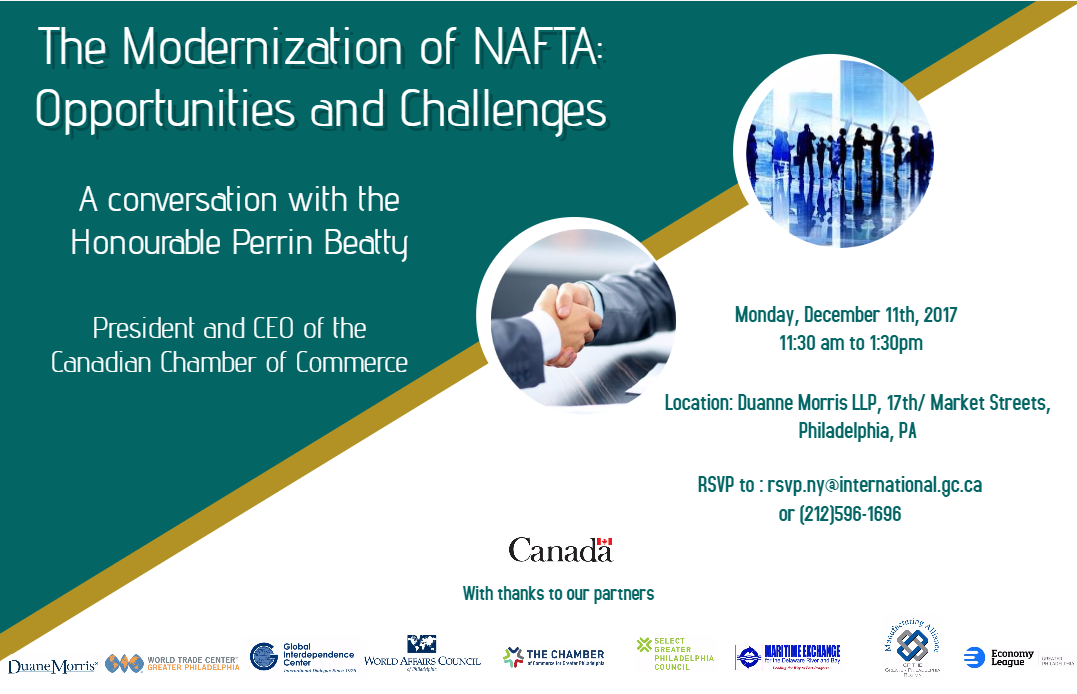

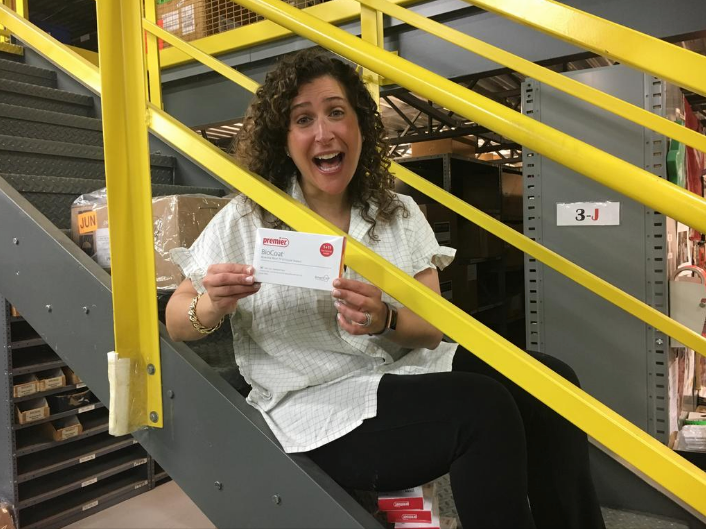
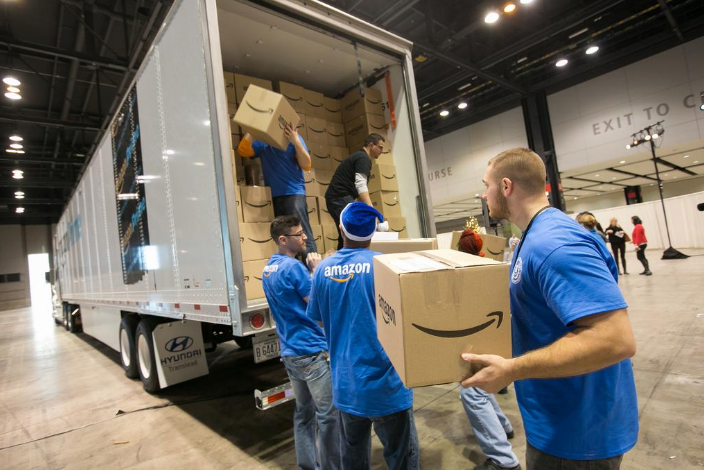

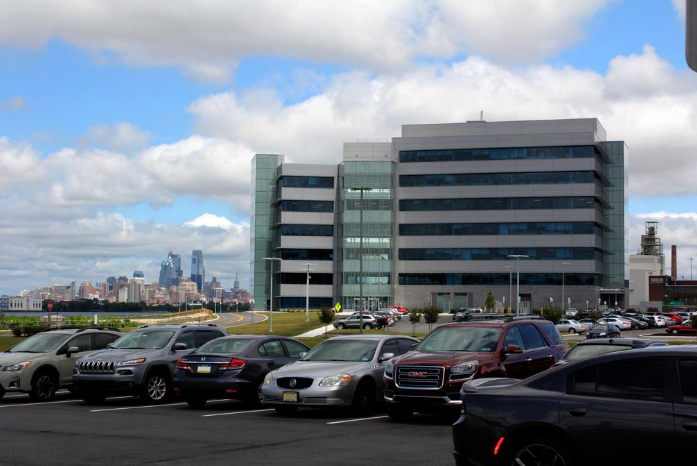
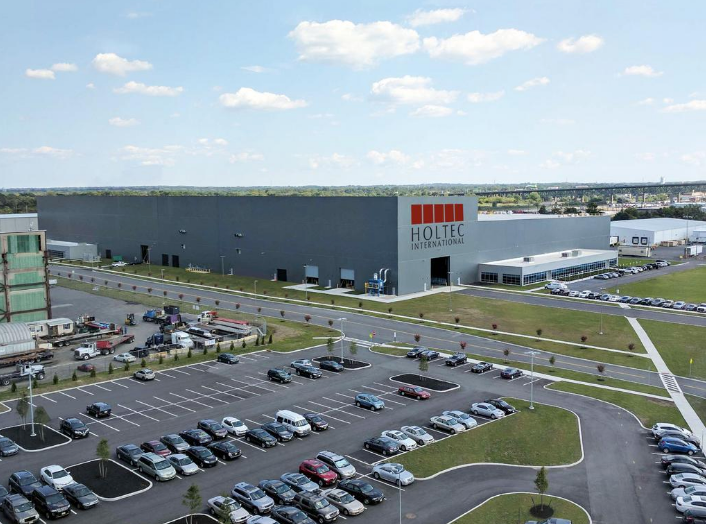
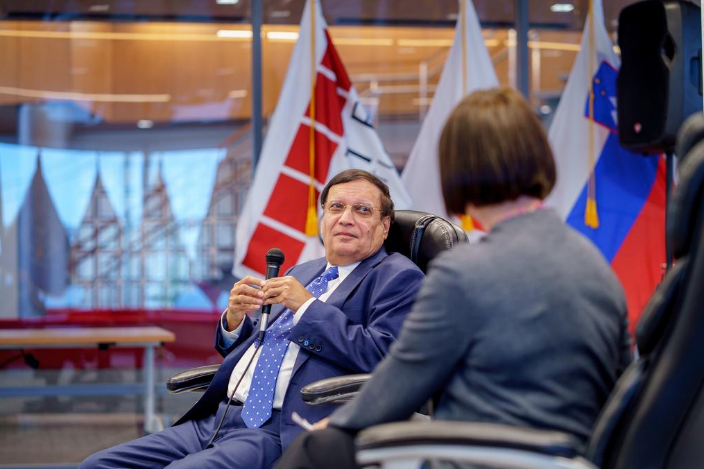


 RSS Feed
RSS Feed